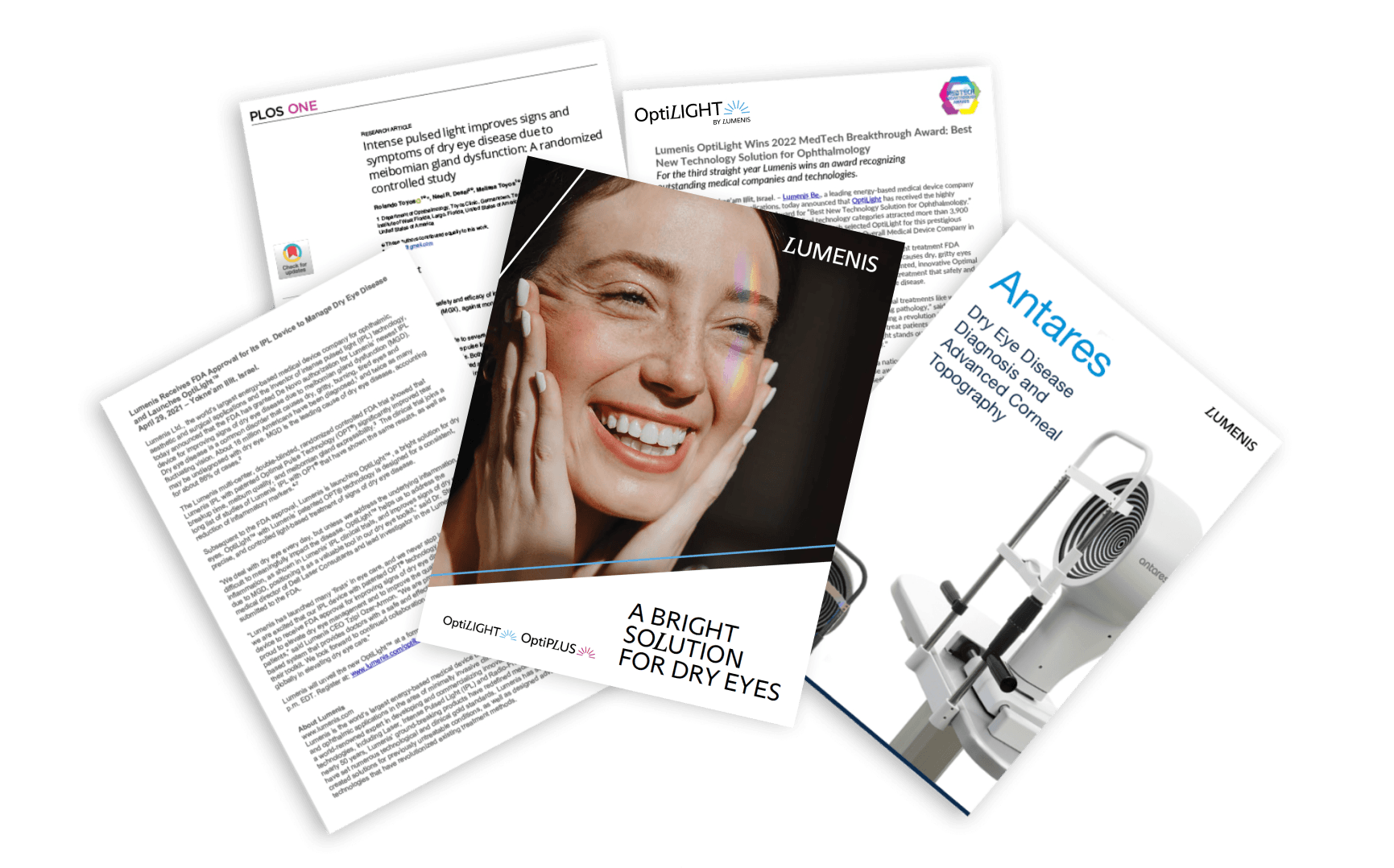Ocular surface disease is persistent and progressive, and it affects vision and quality of life for so many patients. In my practice, the goal is to get ahead of the problem early, when treatment is most effective. When I read all the science behind Optima IPL, I realized that to improve the ocular surface, I needed it to cut off the root cause of the problem: inflammation. It was clear that patients here in Cincinnati deserved IPL, and since no one else had it, I needed to get Optima IPL myself.
I started using my new Optima IPL system routinely in June 2020, and it’s been rocking and rolling ever since! The results are great, the demand is amazing, and the ROI is like nothing I expected. Here are some key highlights:
- Results — We build a management package based on each patient’s individual pathology and lifestyle, so Optima IPL is usually accompanied by medications, products or other procedures. A common combination is Optima IPL with thermal pulsation. Rather than competing against each other, IPL and thermal pulsation complement each other nicely. IPL has dramatically increased my capture rates for thermal pulsation, and the results are much better than thermal pulsation alone. Not only are patients subjectively reporting resolution in symptoms, but my objective clinical signs are decreasing. SPEED scores are decreasing below symptomatic (most of my patients start in the high teens and 20s), inflammatory markers are decreasing, and even objective redness scores are going down. What more could a clinician ask for than happy patients and healthy testing?
- High demand — With no promotion of Optima IPL, we have averaged five new starts a month. I did not anticipate that high a capture rate in our small practice—it blew me away! With patients having four sessions over the course of a few months, followed by maintenance every year, the volume has snowballed. Patients with tend to do a lot of their own research, so I soon began seeing patients seeking second opinions and asking for IPL by name.
- Fast ROI — With five new starts each month and the volume compounding through repeat visits and maintenance, ROI for Optima IPL almost immediately surpassed my expectations. It’s wild for me to have over $10,000 worth of sales from the first month, and it has continued consistently. I’m very excited to see what the future holds.
- Patient love — Patients usually start to feel the results of IPL after about two sessions, and the symptomatic improvement lasts, so they’re very happy. It’s been refreshing. Quite a few patients have asked if they can have Optima IPL more frequently than recommended because it’s a pleasant experience. Patients also notice the aesthetic benefit of IPL, which is a nice bonus.
I know a lot of my peers are doing comprehensive screening and understand just how prevalent dry eye disease is in their practices. The next step is to meet each patient’s comprehensive set of needs. Optima IPL is part of that commitment because it allows me to treat periocular inflammation and head off the cascade of problems it causes, including ocular surface disease. If I didn’t use Optima IPL, my patients wouldn’t be getting the complete care they deserve, and they might go elsewhere (cities away) to find it. I’m glad they’re happy with their care and staying with me.
* Lumenis M22 Optima IPL and Stellar M22 Optima IPL are authorized for use to treat Meibomian Gland Dysfunction, the leading type of dry eye disease, in: the European Union (CE), China, Australia, New Zealand, South Korea, Brazil, and Hong Kong.
In the US, the devices are cleared for treatment of inflammatory skin conditions such as rosacea. Rosacea may lead to ocular surface conditions such as MGD, with 80% of rosacea patients suffering from MGD. Treatment of rosacea with the M22 has not been clinically proven to prevent or delay the development of MGD.
Explore Other Resources
Discover new
possibilities
Download OptiLIGHT and OptiPLUS info kit

PB-00026170 Rev A











